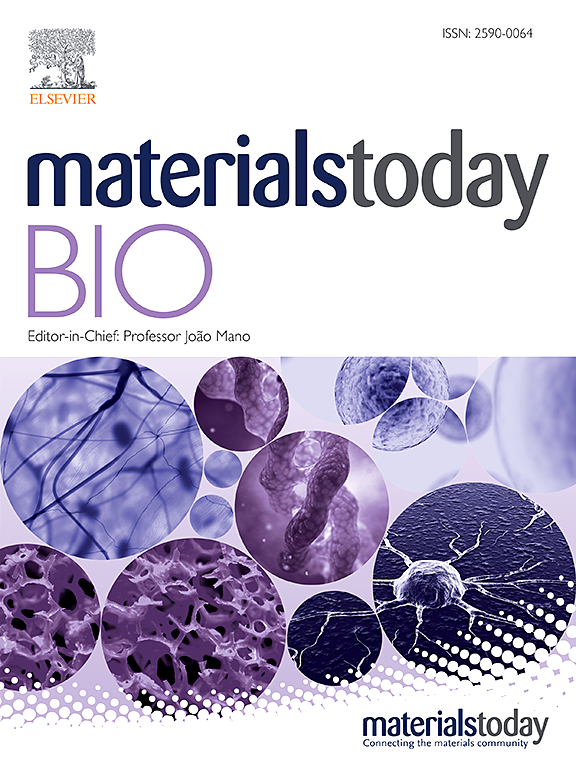Water triggered injectable polylactic acid hydrogel based on zwitterionic sulfobetaine modification for incompressible bleeding and tissue anti-adhesion
IF 8.7
1区 医学
Q1 ENGINEERING, BIOMEDICAL
引用次数: 0
Abstract
Massive blood loss is the main cause of prehospital trauma-related death, the development of rapid and effective hemostatic materials is imminent. Injectable hydrogels have the advantages of covering irregular bleeding sites and quickly closing the wound. However, its inherent viscosity can easily precipitate tissue adhesion in vivo and other complications. Based on the anti-protein properties of zwitterion and our previous work about in situ hemostatic/anti-adhesion hydrogel material, we have synthesized a series of injectable hydrogel composed of sulfobetaine-modified polylactic acid (PLA) and gelatin (Gel). These hydrogels could form a smooth film structure by simple water triggering, thereby conferring anti-adhesive properties. We visualized the changes in surface hydrophobicity using fluorescent probes and demonstrated tissue adhesion, rapid hydrophobic interface response, as well as rapid hemostasis for incompressible wounds through in vivo and in vitro experiments. Additionally, we explored the application of hydrogel materials in the scenario of postoperative bleeding, which can effectively prevent unnecessary adhesion through rapid film formation and the anti-protein property of sulfobetaine. We believe that this multifunctional hemostatic hydrogel has the potential to serve as a prehospital emergency treatment of incompressible bleeding and benefit to the postoperative recovery of patients.
基于两性离子磺胺甜菜碱改性的水触发可注射聚乳酸水凝胶,用于不可压缩出血和组织抗粘连。
大量失血是院前创伤性死亡的主要原因,开发快速有效的止血材料迫在眉睫。可注射水凝胶具有覆盖不规则出血部位和快速闭合伤口的优点。但其固有的黏性在体内容易沉淀组织粘连等并发症。基于两性阴离子的抗蛋白特性和我们对原位止血/抗粘连水凝胶材料的研究,我们合成了一系列由磺胺甜菜碱改性聚乳酸(PLA)和明胶(Gel)组成的可注射水凝胶。这些水凝胶可以通过简单的水触发形成光滑的薄膜结构,从而具有抗粘接性能。我们利用荧光探针可视化了表面疏水性的变化,并通过体内和体外实验证明了组织粘附、快速疏水界面反应以及对不可压缩伤口的快速止血。此外,我们还探索了水凝胶材料在术后出血场景中的应用,通过快速成膜和磺胺甜菜碱的抗蛋白特性,可以有效防止不必要的粘连。我们相信,这种多功能止血水凝胶有潜力作为院前急救治疗不可压缩性出血,并有利于患者术后恢复。
本文章由计算机程序翻译,如有差异,请以英文原文为准。
求助全文
约1分钟内获得全文
求助全文
来源期刊

Materials Today Bio
Multiple-
CiteScore
8.30
自引率
4.90%
发文量
303
审稿时长
30 days
期刊介绍:
Materials Today Bio is a multidisciplinary journal that specializes in the intersection between biology and materials science, chemistry, physics, engineering, and medicine. It covers various aspects such as the design and assembly of new structures, their interaction with biological systems, functionalization, bioimaging, therapies, and diagnostics in healthcare. The journal aims to showcase the most significant advancements and discoveries in this field. As part of the Materials Today family, Materials Today Bio provides rigorous peer review, quick decision-making, and high visibility for authors. It is indexed in Scopus, PubMed Central, Emerging Sources, Citation Index (ESCI), and Directory of Open Access Journals (DOAJ).
 求助内容:
求助内容: 应助结果提醒方式:
应助结果提醒方式:


